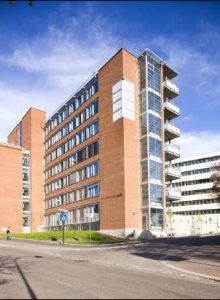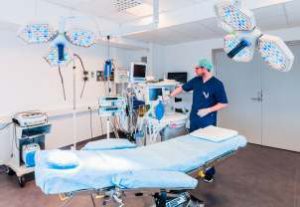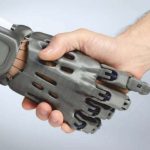Spending more of its GDP (10.5pc) on healthcare than any other country in the world, except the United States and Switzerland, Norway’s healthcare bill amounts to $38.4 billion in total, or $7,300 per citizen.
Officially the Kingdom of Norway is a Nordic country in Northwestern Europe whose core territor y comprises the western and northernmost portion of the Scandinavian Peninsula; the remote island of Jan Mayen and the archipelago of Svalbard are also part of the Kingdom of Norway. The Antarctic Peter I Island and the sub-Antarctic Bouvet Island are dependent territories and thus not considered part of the kingdom. Norway also lays claim to a section of Antarctica known as Queen Maud Land.
 Norway maintains the Nordic welfare model with universal healthcare and a comprehensive social security system, and its values are rooted in egalitarian ideals. The Norwegian state has large ownership positions in key industrial sectors, having extensive reserves of petroleum, natural gas, minerals, lumber, seafood, and fresh water. The petroleum industry accounts for around a quarter of the country’s gross domestic product (GDP). On a per-capita basis, Norway is the world’s largest producer of oil and natural gas outside of the Middle East.
Norway maintains the Nordic welfare model with universal healthcare and a comprehensive social security system, and its values are rooted in egalitarian ideals. The Norwegian state has large ownership positions in key industrial sectors, having extensive reserves of petroleum, natural gas, minerals, lumber, seafood, and fresh water. The petroleum industry accounts for around a quarter of the country’s gross domestic product (GDP). On a per-capita basis, Norway is the world’s largest producer of oil and natural gas outside of the Middle East.
The country has the fourth-highest per capita income in the world on the World Bank and IMF lists. On the CIA’s GDP (PPP) per capita list (2015 estimate) which includes autonomous territories and regions, Norway ranks as number 11. The country has the world’s largest sovereign wealth fund, with a value of $1 trillion. Norway has had the highest Human Development Index ranking in the world since 2009, a position also held previously between 2001 and 2006. It also has the highest inequality-adjusted ranking. Norway ranked first on the World Happiness Report for 2017 and currently ranks first on the OECD Better Life Index, the Index of Public Integrity, and the Democracy Index. Norway has one of the lowest crime rates in the world.
Universal access in healthcare
The Norwegian healthcare system is founded on the principles of universal access, de-centralization and free choice of provider. On a per head basis, Norwegian expenditure on healthcare is the highest in the world. Every member of the Norwegian National Insurance scheme (broadly speaking, every resident of Norway) has the right to access healthcare services. Although treatment is not free, there is an annual limit on how much any one individual has to pay for healthcare.
While health care policy is controlled centrally, responsibility for the provision of health care is decentralized. Local authorities at municipal level organize and finance primary health care services according to local demand. The central government has overall managerial and financial responsibility for the hospital sector.
Four Regional Health Authorities (RHA) is overseen by the Ministry of Health and Care Services runs all public hospitals in Norway. A small number of hospitals are privately owned. However, the public funds most private hospitals, and private health insurance is not at all commonplace.
Healthcare in Norway is not free. Residents must pay for all treatment and even a standard consultation with a GP. However, once a person reaches an annual limit of expenditure, they receive an exemption card, which entitles them to free treatment for the remainder of the year. This system ensures that everyone pays a little, but the sick are not burdened with the stress of huge medical bills. The exemptions to this system include children under sixteen and pregnant women, who receive free healthcare.
Norway maintains the Nordic welfare model with universal healthcare and a comprehensive social security system, and its values are rooted in egalitarian ideals. The state has large ownership positions in key industrial sectors, having extensive reserves of petroleum, natural gas, minerals, lumber, seafood, and fresh water.
Pharmaceutical system
The Ministry of Health and Care Services (Helse- og omsorgsdepartementet, HOD) is the legislative authority. The Norwegian Medicines Agency (Statens legemiddelverk, NoMA) (subordinate to the HOD) is in charge of marketing authorisation, classification, vigilance, pricing, reimbursement and providing information on medicines to prescribers and the public.
 HELFO decides on reimbursement for individual patients for pharmaceuticals without general reimbursement or indications not covered by general reimbursement. HELFO also monitors the prescriptions issued by outpatient doctors.
HELFO decides on reimbursement for individual patients for pharmaceuticals without general reimbursement or indications not covered by general reimbursement. HELFO also monitors the prescriptions issued by outpatient doctors.
All major international pharmaceutical companies are represented in Norway, but only a few of them have established their own manufacturing units in the country. In Norway there are three wholesalers providing a full range of products to the market, belonging to the leading European pharmaceutical distribution companies. Each of the wholesalers is vertically integrated with their own pharmacy chain. In addition small outlets belonging to the pharmacies dispense medicines. Grocery stores, gasoline stations e.g. are allowed to distribute a restricted list of OTC.
Healthcare technologies
Norway spends more of its GDP (10.5pc) on healthcare than any other country in the world, except the United States and Switzerland. That amounts to $38.4 billion in total, or $7,300 per citizen per annum in 2016. The state-dominated medical system, covering 85 per cent of total healthcare costs, is striving for technological advances and organizational improvements in a climate of budget constraints, a rise in chronic disease and an raging population.
The health and social welfare system in Norway is predominantly publicly financed, primarily through a national insurance tax. The national insurance, or social security, is a collective insurance plan to which all in Norway belong. Citizens requiring medical treatment in Norway are guaranteed medical care and user fees are limited – no one pays more than about $150 per year for public health services.
 Estimates from the public health authorities and trade associations indicate that the total Norwegian market for medical and dental equipment and supplies is over $2 billion. Public health care authorities are estimated to account for about 90 per cent of the purchases of medical equipment, whereas private (non-publicly funded) purchases account for the remaining 10 per cent. About half of the medical equipment is sold to hospitals.
Estimates from the public health authorities and trade associations indicate that the total Norwegian market for medical and dental equipment and supplies is over $2 billion. Public health care authorities are estimated to account for about 90 per cent of the purchases of medical equipment, whereas private (non-publicly funded) purchases account for the remaining 10 per cent. About half of the medical equipment is sold to hospitals.
The Norwegian pharmaceuticals market is estimated at $2.8 billion, including value added tax (PRP – pharmacy retail price). The modest growth in recent years is attributed to the government’s restrictive policy in fixing prices and reimbursement, and the patent expiry of several high turnover brands. The generic pharmaceuticals market has grown significant in recent years and accounts for 49 per cent of the market, and with the introduction of the ‘step price scheme,’ aimed at further reducing the price of generic medicines, this is a trend set to continue.
 With a rapidly aging population, an increase in chronic disease and increasing healthcare costs, the Norwegian government has stated that telemedicine, e-health and welfare technology are national priorities as they are very important tools in the successful implementation of the key Integrated Health Care Reform of 2012. The authorities are implementing electronic patient jour nals/EPJ’s, and have successfully launched e-prescriptions, a national health portal where citizens will be able to have access to their digital health information.
With a rapidly aging population, an increase in chronic disease and increasing healthcare costs, the Norwegian government has stated that telemedicine, e-health and welfare technology are national priorities as they are very important tools in the successful implementation of the key Integrated Health Care Reform of 2012. The authorities are implementing electronic patient jour nals/EPJ’s, and have successfully launched e-prescriptions, a national health portal where citizens will be able to have access to their digital health information.
Telemedicine is seen as an important part of future acute medical care, radiology (work-sharing among hospitals) with specialist consultations within the ear-nose-throat field (video conferencing); specialist consultations in dermatology (e.g. video conferencing and still picture technology); and cardiography (e.g. heart rhythm/sound comparisons). Also, clinical information systems, home care and personalized health systems, services for remote patient monitoring, systems for integrating local-, regional-, and national health information networks, represent significant potential. However, there are some barriers to entry, such as a requirement for local language, privacy and data protection concerns, standardization and interoperability issues, and reimbursement issues.
Due to very limited domestic production, Norway relies heavily on imports of medical equipment and increases in market demand are likely to be met by imports. Equipment to be sold in Norway must be registered with the Norwegian Directorate of Health. Norway participates in the EU internal market through the EEA Agreement (European Economic Area), and has the same rights and obligations as EU member states in regulation of medical devices.
Norway spends an estimated $7 billion annually on its hospitals, and there is an attractive market for innovative, high quality medical and dental equipment. A further $2.5 billion has been earmarked for the Norwegian Ministry of Health and Care Services for upgrading hospital and/or building new hospital facilities.
The generic pharmaceuticals market has grown significant in recent years and accounts for 49 per cent of the market, and with the introduction of the ‘step price scheme,’ aimed at further reducing the price of generic medicines, this is a trend set to continue.














